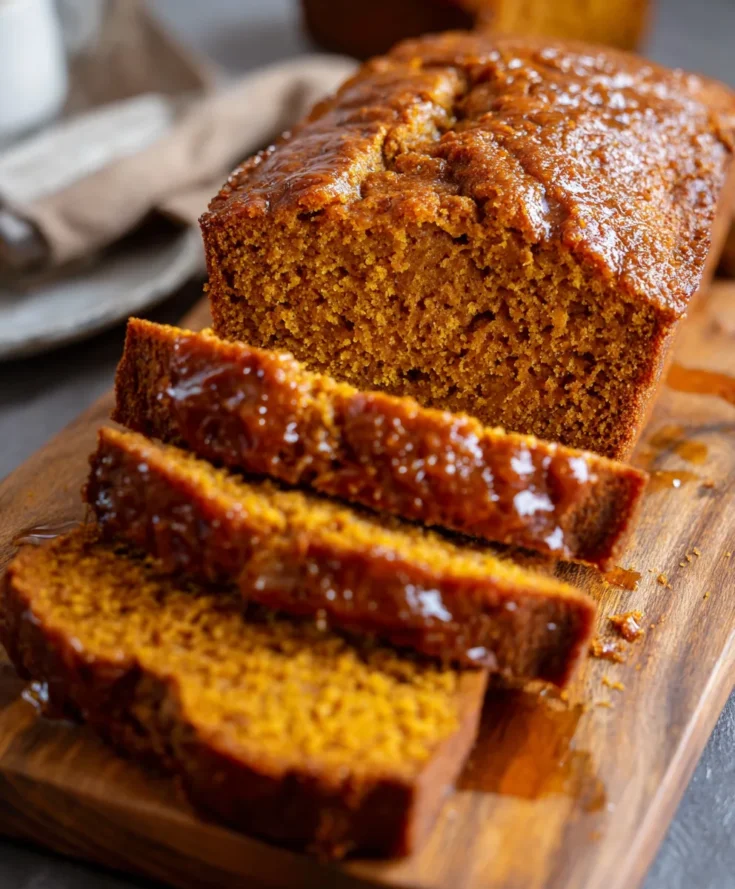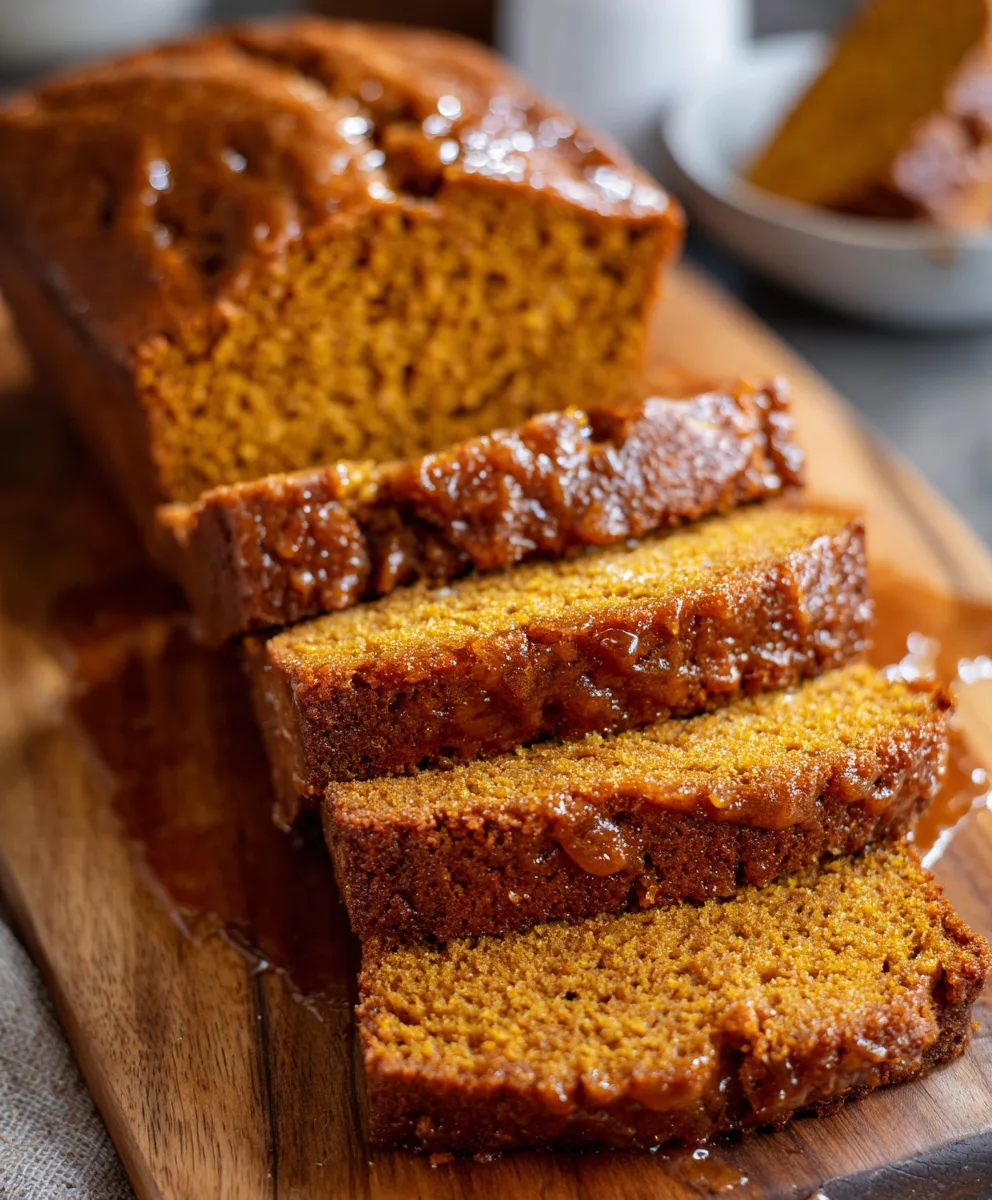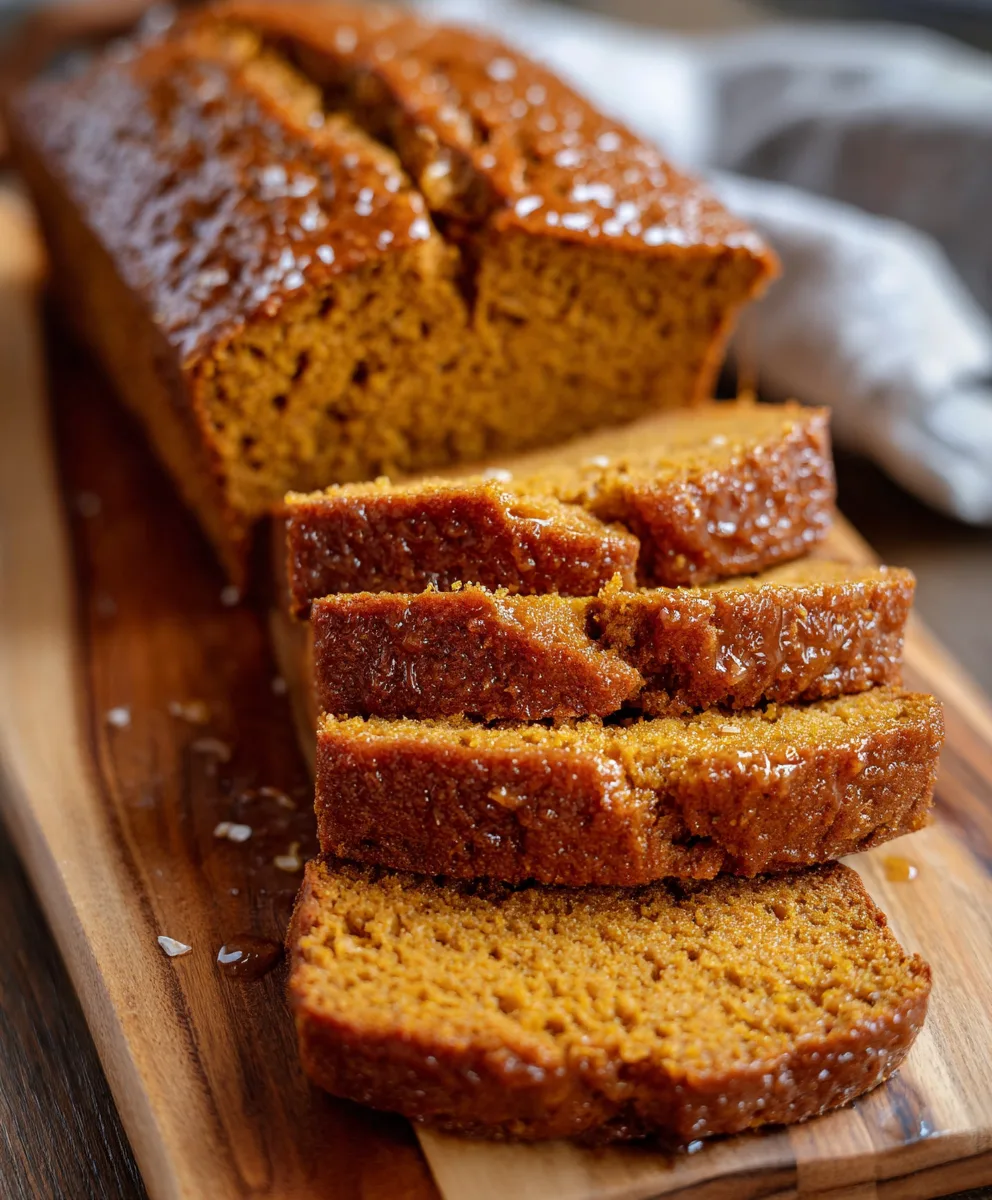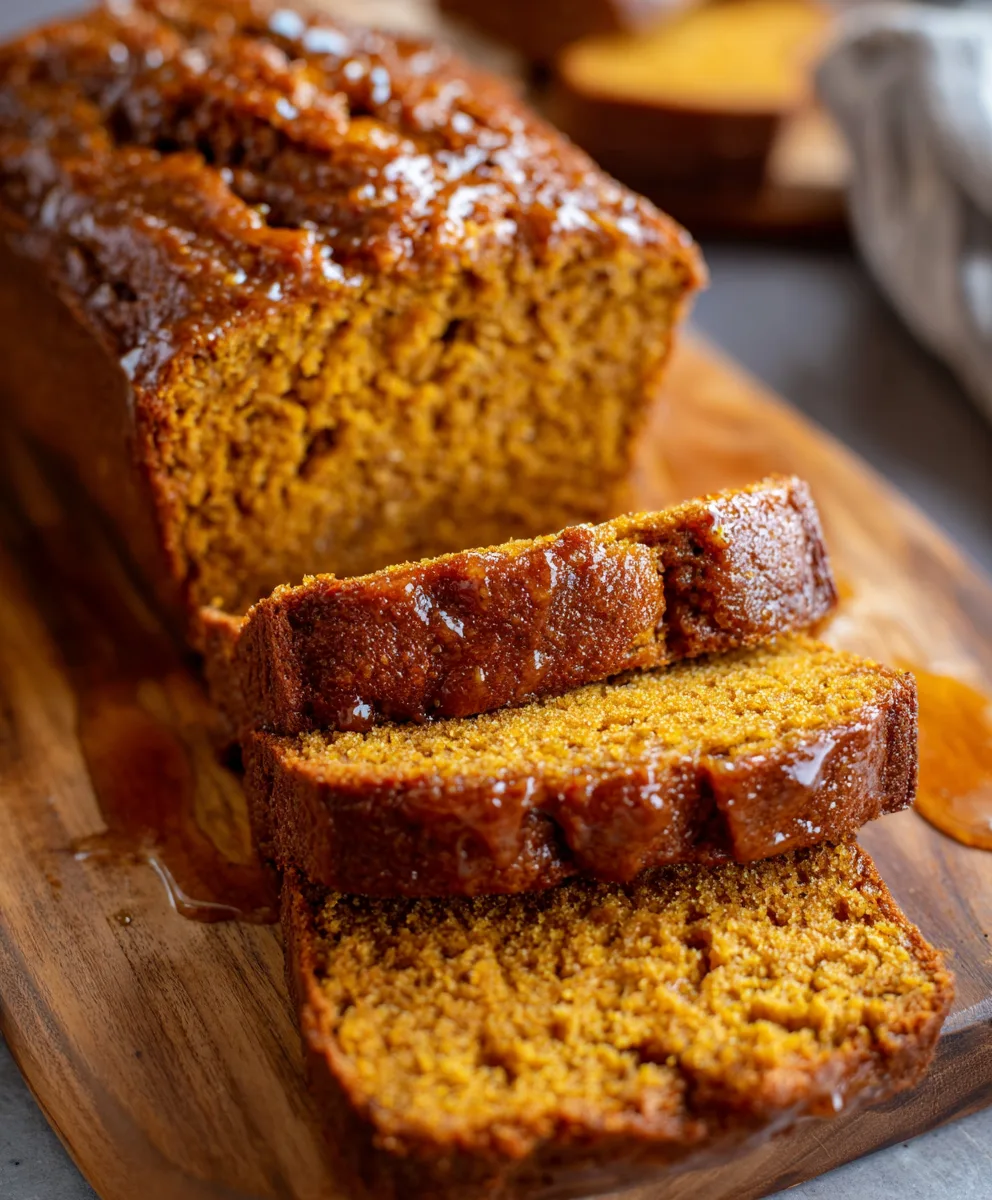Introduction to Low Carb Pumpkin Bread
Understanding Low Carb Baking
Low carb diets focus on limiting carbohydrate intake to promote better health and support weight management. By reducing carbs, you encourage your body to burn fat for energy, which can improve metabolism and stabilize blood sugar levels. This approach has gained popularity as many seek healthier alternatives to traditional high-carb foods. Low carb baking replaces conventional flour and sugar with nutrient-rich ingredients, creating delicious treats without the blood sugar spikes. These recipes also often boost protein and fiber, contributing to sustained energy throughout the day. Many home bakers appreciate how low carb baking allows them to enjoy their favorite baked goods guilt-free, while still maintaining their dietary goals.
Why Choose Pumpkin Bread?
Pumpkin bread carries a special place in seasonal baking, bringing warmth and comfort to fall and winter menus. Beyond its cozy flavor, pumpkin offers a wealth of nutritional benefits. It is rich in vitamins like A and C, packed with antioxidants that support immunity and skin health. The natural moisture from pumpkin puree also helps keep bread tender and flavorful without extra fat. Moreover, pumpkin bread fits well within many diet plans, including keto, paleo, and gluten-free, when prepared with the right ingredients. This versatility makes it a go-to option for anyone looking to enjoy a wholesome, tasty treat that aligns with their nutrition needs.
Overview of the Article
This article dives deep into creating homemade low carb pumpkin bread that satisfies both taste and health goals. You will find clear guidance on selecting ingredients, step-by-step baking instructions, and tips for ingredient substitutions. Nutritional insights help you understand how this bread supports your well-being. Plus, a handy recipe card at the end will simplify your baking experience. Whether you’re new to low carb baking or a seasoned pro, this article equips you with all you need to bake pumpkin bread that delights and nourishes. Let’s get started and bring this flavorful, healthy bread to your kitchen!
Essential Ingredients for Low Carb Pumpkin Bread
Base Ingredients: The Foundation of Flavor and Texture
To create a delicious low carb pumpkin bread, start with nutrient-dense base ingredients. Almond flour provides a rich, nutty flavor and a tender crumb. It also adds healthy fats and protein, keeping the bread moist without gluten. Coconut flour complements almond flour by absorbing moisture and giving structure, but it requires careful measurement because it is highly absorbent. Eggs play a vital role, binding the ingredients together and helping the bread rise. They add richness and improve texture. Pumpkin puree is the star ingredient, delivering natural moisture, subtle sweetness, and a vibrant orange color. Its fiber content supports digestion while adding vitamins A and C. Together, these base ingredients form a balanced mix that satisfies both taste and nutrition.
Sweeteners: Low Carb Options for Natural Sweetness
Choosing the right sweetener is essential for keeping this pumpkin bread low carb. Erythritol offers sweetness without calories or impact on blood sugar, making it a popular choice among keto bakers. Monk fruit sweetener is another excellent option, blending well and providing a clean, sweet taste. Allulose mimics sugar’s caramelization, enhancing texture and flavor without raising carbs. Stevia glycerite delivers natural sweetness with a slight herbal note and can be combined with other sweeteners for balanced flavor. Using these sweeteners allows you to enjoy a pleasantly sweet bread without the guilt of traditional sugar.
Leavening Agents: Making the Bread Rise Perfectly
Baking powder and baking soda work together to give pumpkin bread a light and airy texture. Baking powder provides a steady rise, while baking soda reacts with the natural acidity of pumpkin and any added yogurt or vinegar to produce carbon dioxide bubbles. This reaction ensures the bread develops a tender crumb and soft structure. Using fresh leavening agents is key to avoiding dense or flat bread.
Flavor Enhancers: Spices That Elevate Pumpkin Bread
Pumpkin bread shines with the warm, inviting aromas of spices. Cinnamon adds a sweet and woody note, while nutmeg brings a subtle earthiness. Vanilla extract rounds out the flavor profile, adding depth and richness. These classic spices balance the natural earthiness of pumpkin and make each bite comforting and flavorful. Adjust spice levels to your preference for a personalized twist.
Optional Add-ins: Customizing Your Bread
Add texture and extra flavor by mixing in optional ingredients. Chopped nuts like walnuts or pecans provide a satisfying crunch and healthy fats. Sugar-free chocolate chips introduce a touch of indulgence without extra carbs. Pumpkin seeds offer a nutty bite and boost fiber and minerals. These add-ins transform your bread into a more exciting treat while maintaining low carb standards.
Ingredient Substitutions for Dietary Needs
Gluten-Free Options
This pumpkin bread naturally fits gluten-free diets thanks to almond and coconut flours. Always use certified gluten-free versions to avoid cross-contamination. This ensures safety for those with gluten sensitivities or celiac disease.
Dairy-Free Variations
For a dairy-free version, replace eggs with flax eggs or chia eggs made by mixing ground seeds with water and letting them gel. Use dairy-free butter or coconut oil as alternatives to traditional butter. These swaps maintain texture and moisture while accommodating dairy restrictions.
Nut-Free Alternatives
If you need a nut-free option, substitute almond flour with sunflower seed flour. Sunflower seed flour mimics almond flour’s texture but may cause slight color changes. Adjust moisture by reducing coconut flour slightly to balance absorbency. This substitution broadens accessibility while keeping the bread low carb and flavorful.
How to Make Homemade Low Carb Pumpkin Bread
Preparation: Setting Up for Success
Begin by preheating your oven to 350°F (175°C). This temperature ensures the bread bakes evenly and develops a beautiful crust. While the oven warms, prepare your loaf pan by greasing it lightly with butter or oil, then line it with parchment paper. The lining prevents sticking and makes it easy to remove the bread after baking. Taking these simple steps upfront sets the stage for a perfect loaf.
Mixing Dry Ingredients: Building the Flavor Base
In a large mixing bowl, combine almond flour, coconut flour, baking powder, baking soda, cinnamon, nutmeg, and a pinch of salt. Almond and coconut flours provide structure, while the baking agents give the bread its rise. The cinnamon and nutmeg add warm spices that bring out the pumpkin’s natural sweetness. Whisk these dry ingredients together until fully blended, ensuring an even distribution of leavening and spices throughout the mixture.
Mixing Wet Ingredients: Blending Moisture and Sweetness
In a separate bowl, whisk together the eggs, pumpkin puree, sweetener of choice, and vanilla extract. Eggs act as the binder and enrich the texture, while pumpkin puree adds moisture and subtle flavor. The sweetener balances the earthiness of pumpkin and spices, and vanilla extract rounds out the taste with a fragrant note. Mix thoroughly to combine all wet ingredients into a smooth batter.
Combining Wet and Dry Mixtures: Creating the Batter
Gradually pour the dry ingredients into the wet mixture, stirring gently as you go. Use a spatula or wooden spoon to fold the ingredients together until just combined. Avoid overmixing, as this can lead to a denser bread. The batter should be thick but spreadable, holding together well without being overly stiff.
Adding Optional Ingredients: Enhancing Texture and Taste
If desired, fold in optional add-ins such as chopped nuts, sugar-free chocolate chips, or pumpkin seeds. These extras add delightful crunch and bursts of flavor, making each slice more interesting. Be careful not to overdo it; about half a cup of add-ins keeps the balance right and preserves the bread’s integrity.
Baking: Turning Batter into Bread
Pour the batter evenly into the prepared loaf pan, smoothing the top with a spatula. Place the pan in the preheated oven and bake for 50 to 60 minutes. Check doneness by inserting a toothpick into the center; it should come out clean or with just a few moist crumbs. If the top browns too quickly, loosely cover with foil to prevent burning while the inside finishes baking.
Cooling and Serving: The Final Touch
Once baked, remove the loaf pan from the oven and let the bread cool for 10 minutes inside the pan. This rest allows the bread to firm up slightly, making it easier to handle. Afterward, carefully lift the bread out using the parchment paper and transfer it to a wire rack. Let it cool completely before slicing. Cooling fully enhances flavor and prevents the bread from crumbling when cut. Enjoy your homemade low carb pumpkin bread fresh, or store it properly for later indulgence
Nutritional Information and Health Benefits
Nutritional Breakdown of Low Carb Pumpkin Bread
Macronutrients per Serving
Each slice of low carb pumpkin bread delivers a balanced mix of macronutrients that fuel your body while keeping carbs in check. Typically, a serving contains around 200 to 250 calories, making it a satisfying snack or breakfast option. Total carbohydrates usually range between 6 to 8 grams, but the key number is net carbs—the digestible carbs after subtracting fiber and sugar alcohols—which typically stay under 4 grams per slice. Protein content hovers around 7 to 9 grams, supporting muscle repair and satiety. Healthy fats, contributed mainly by almond flour and eggs, make up about 15 to 18 grams per serving. This balance keeps energy levels steady and helps avoid sugar crashes.
Micronutrients
Beyond macros, this pumpkin bread provides essential vitamins and minerals. Pumpkin puree is a rich source of vitamin A, vital for eye health and immune support. It also contributes vitamin C, which aids in tissue repair and antioxidant protection. Minerals such as potassium and magnesium, present in both pumpkin and almond flour, support muscle function and cardiovascular health. These nutrients combine to make the bread more than just a tasty treat—it’s a nourishing choice that supports overall wellness.
Health Benefits of Ingredients
Almond Flour
Almond flour stands out for its high content of healthy monounsaturated fats and dietary fiber. These elements promote heart health by helping to reduce bad cholesterol levels. The fiber also aids digestion and prolongs feelings of fullness, making it easier to control appetite and maintain healthy blood sugar levels.
Coconut Flour
Coconut flour is rich in fiber, which supports digestive health and regulates blood sugar spikes. Its unique composition helps slow carbohydrate absorption, contributing to sustained energy. Including coconut flour in your baking also adds beneficial fatty acids that may boost metabolism.
Pumpkin Puree
Pumpkin puree is loaded with antioxidants, which help fight inflammation and protect cells from damage. Its high vitamin A content supports the immune system, while the natural fiber promotes digestive health. Using pumpkin puree adds moisture and natural sweetness without excess calories.
Erythritol and Monk Fruit Sweeteners
These sweeteners have a low glycemic index, meaning they do not cause significant blood sugar increases. This quality makes them ideal for diabetics and individuals following ketogenic or low carb diets. Both erythritol and monk fruit provide sweetness without calories, helping to satisfy sweet cravings without compromising health goals.
FAQs About Low Carb Pumpkin Bread
Can I use canned pumpkin for this recipe?
Yes, canned pumpkin puree works perfectly as long as it contains no added sugars or spices. Pure pumpkin puree keeps the bread moist and flavorful while fitting well within low carb guidelines. Always check the label to avoid pumpkin pie filling, which contains sweeteners and other additives that can affect both taste and nutrition.
How do I store leftover pumpkin bread?
To keep your pumpkin bread fresh, store it in an airtight container at room temperature for up to three days. If you want it to last longer, refrigerate the bread where it will stay good for about a week. Proper storage preserves moisture and prevents the bread from drying out or developing mold.
Can I freeze pumpkin bread?
Absolutely. Freezing is an excellent way to extend the shelf life of your pumpkin bread. Slice the bread before freezing, then wrap each piece tightly in plastic wrap or aluminum foil. Place the wrapped slices in a freezer-safe bag or container. This method keeps the bread fresh for up to three months. When ready to eat, thaw slices at room temperature or warm them gently in a toaster or oven.
How can I make the bread sweeter?
If you prefer a sweeter pumpkin bread, simply increase the amount of your chosen low carb sweetener to suit your taste. Adjusting sweetness allows you to personalize the flavor without adding carbohydrates. Remember to make small increments and taste the batter if possible, so you get the perfect balance.
Can I make this recipe into muffins?
Yes, you can easily turn this pumpkin bread recipe into muffins. Use a muffin tin and fill each cup about two-thirds full. Reduce the baking time to 20–25 minutes, checking for doneness by inserting a toothpick into the center. Muffins bake faster due to their smaller size but deliver the same great flavor and texture as the loaf.
Homemade Low Carb Pumpkin Bread – Healthy & Moist Fall Loaf

A moist and flavorful pumpkin bread made with low-carb ingredients, perfect for fall baking.
Ingredients
- 2 cups almond flour
- 1/2 cup coconut flour
- 1 tsp baking powder
- 1/2 tsp baking soda
- 1 tsp cinnamon
- 1/2 tsp nutmeg
- 1/2 tsp salt
- 4 large eggs
- 1 cup pumpkin puree
- 1/2 cup erythritol or monk fruit sweetener
- 1 tsp vanilla extract
- Optional: 1/2 cup chopped nuts or sugar-free chocolate chips
Instructions
Notes




